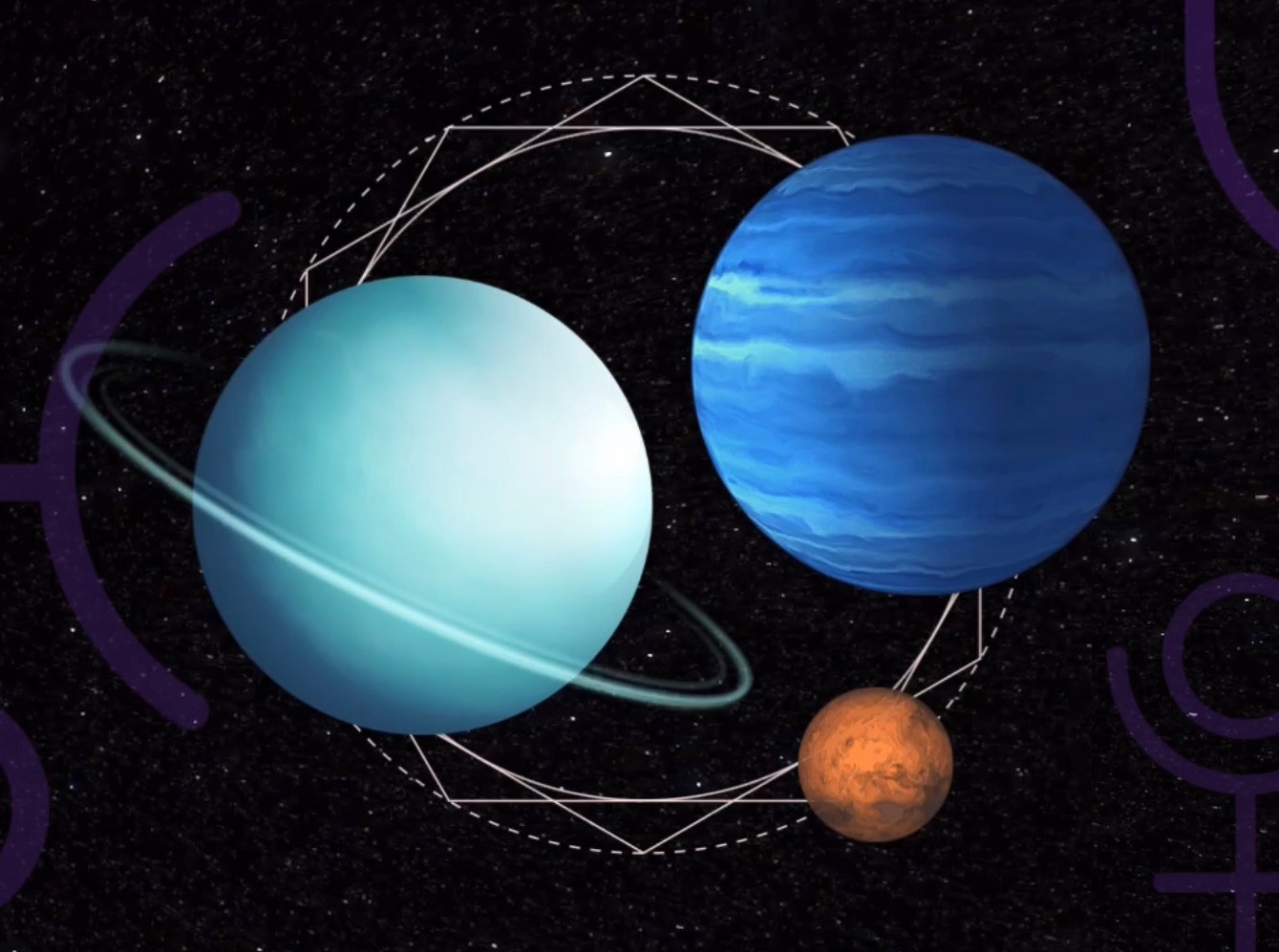Half a century ago, for reasons I’ve never understood, the Higher Powers of the Universe shut the door to Greece in my face and hung a Do Not Enter sign over it. Now, fifty years later, they’ve traded that sign for a welcome mat. Suddenly, Michelle and I have been offered an all-expense-paid deluxe trip there with a merry crew of friends, compliments of the Forrest Center for Evolutionary Astrology. All I have to do is sing for my supper.
Not to look a gift horse in the mouth, but I find myself gazing quizzically up at the Heavens, wondering “what’s going on? Why the sudden change of heart?”
 Let me begin at the beginning. Way back in September 1973, I was twenty-four years old and sitting in Kennedy airport in New York City awaiting my first ever flight to Europe. Like many of my generation, I had a Eurail Pass and a backpack. I planned to remain in Europe until my money ran out. And my real destination was Greece. I was so hungry to see that country that I had actually memorized a vocabulary of a couple hundred Greek words. For reasons I could not name, to me the rest of Europe was only a sideshow.
Let me begin at the beginning. Way back in September 1973, I was twenty-four years old and sitting in Kennedy airport in New York City awaiting my first ever flight to Europe. Like many of my generation, I had a Eurail Pass and a backpack. I planned to remain in Europe until my money ran out. And my real destination was Greece. I was so hungry to see that country that I had actually memorized a vocabulary of a couple hundred Greek words. For reasons I could not name, to me the rest of Europe was only a sideshow.
Why was I so passionate about Greece in particular? Beyond a catch-all reference to “some kind of karma there,” I have no idea at all. I have no Greek ancestry – according to Ancestry.com, genetically I am 100% northern European – call me Mister Whitebread. My affinity for Greece was a mystery, but just like when you’re falling in love with someone, all questions and doubts were irrelevant. I was going to Greece, come hell or high water. In the back of my mind was the possibility that I wasn’t going to come home again, at least for a long time.That’s how strong my feelings were.
By November 1973, I had made my way through England, down through Spain, and onward to Rome. In those days, the “hippie route” to Greece was to catch the ferry to the Greek island of Corfu from the heel-of-the-boot Italian coastal city of Brindisi. My girlfriend and I were about to head there when word spread through the youth hostel that a violent revolution had just started in Greece. There were rumors of students being shot in the streets after a major uprising on November 17. The evil dictator, Georgios Papadopoulos, was under siege. The border was closed. No one could get in even if they were crazy enough to want to try.
After a bloody mess, the dictatorship was overthrown a week later on November 25,1973 – but only by hardline elements in the Army. Out of the frying pan and into the fire, in other words. It looked grim. To make matters worse, I was a long-haired leftist hippie, so I might as well have had a bull’s eye painted on my forehead. Looking the way I looked, only a fool would step onto those blood-soaked streets. I badly wanted to see Greece, but I’m also a practical Capricorn. I could do the math. We turned around and went back to Spain and hung out on Mallorca in the Balearic Islands until the money ran out.
Sadly, after all of that planning and dreaming, there was no Greece for me – just a feeling of depletion. All the juice went out of that dream.
Until now, fifty years later.
LOOKING THROUGH THE ASTROLOGICAL LENS
So what was happening for me astrologically in November 1973? Can the planets cast any light on my questions? Here’s my chart, plus my transits and progressions for November 17, 1973 – the day the student protests exploded and my dreams of seeing Greece died.

As always, it’s wise to start any analysis of transits and progressions with the birthchart itself. Pluto rules both my Scorpio Ascendant (and my south node) from the 9th house – the “house of long journeys over water.” Clearly there’s some “geographical karma” at play in my life. Any 9th house configuration suggests that a person will be called upon to travel or at least interact with a new cultural framework. Because Pluto also rules the south node, some of the places I’ll be “fated” to visit are certain to trigger past life memories and impressions – feelings of “returning to the scene of the crime.” That’s true whether I did “the crime” or it was done to me.
At the time of my aborted visit to Greece, those astrological potentials were being seriously activated. My natal 4th house Moon was triggered by an opposition to transiting Pluto. (That lunar house placement adds a particular sensitivity in me to where I live and to location in general.) Pluto was stirring up some kind of repressed “homing instinct” in me – but why was it repressed? Something psychologically threatening was surfacing.
Of course, among other things, Aries – my Moon sign – is the sign of war. War in the home (4th house)? As a kid, I actually had a happy family life – but the streets outside our apartment in New York were mean. I had to fight a lot. But in evolutionary astrology, we understand that everything in your chart is karmic. What prior-life themes underlie that hot Moon of mine? Back to Greece – and here’s where we put two and two together. What had hurt me in Greece long ago in another body? Remember – transiting Pluto was opposing my natal Moon during that whole period leading up to my failed visit to Greece. Pluto has a particular karmic resonance with me because of its rulership of my south node.
My last exact Pluto-Moon opposition had occurred just a few weeks before the border closed, but Pluto hadn’t moved very far. What hard memories was I “barely ready” to face?
There’s more. As we have seen, much of this analysis goes back to my natal Moon. But to me, the most dramatic astrological piece of my whole Greek puzzle lies with the progressed Moon. When I was literally “on the cusp” of entering Greece in November 1973, that progressed Moon was only one degree away from entering my 4th house – it was “returning home” too. Metaphorically, I was “one degree” away from entering a land that in some mysterious way felt like home to me.
And I was prevented from crossing the line. Something blocked me. What’s the planet that represents blockages in astrology? Everyone knows that the answer is Saturn. I was born with Saturn on my Midheaven, so that same progressed Moon was also opposing my Saturn. That aspect would be exact just six weeks later, so it was very close to precise when the door slammed in my face.
Meanwhile, where was Saturn itself by transit? I almost want to laugh – it squared my natal Moon on November 26, 1973, one day after the dictator Papadopoulos fell. Once again, everything leads back to the Moon. And with my Moon in the 4th house and both Pluto and Saturn in the picture, the “blockage of home” symbolism is dramatic, unambiguous, and literal.
Let’s take one more brief step. This one is about Neptune, a planet which can often represent loss or “doing without.” In a conventional astrological conversation, we would say that during this episode in my life, transiting Neptune was “squaring my Midheaven.” And that’s true – the aspect had been exact just one month before I had to turn around and head for Mallorca. But let’s not forget that “squaring the Midheaven” also means squaring the astrological nadir – squaring the 4th house cusp, in other words. Once again, we see astrological symbolism for loss (Neptune) linked to home (the 4th house.)
As they say, you can’t make this stuff up.
BUT WHAT DOES IT ALL MEAN?
That of course is the real question! In a sense, most of what I have demonstrated so far is simply that astrology works. But you already know that. Amazing or not, there’s limited glory in letting astrology tell us what we already know. The factual bottom line is simple: I really, really wanted to go to Greece, but the Cosmos said no. As we’ve just seen, that reality is reflected clearly in the most basic form of astrological analysis.
If I knew zero about astrology, I’d write the whole misadventure off as nothing but bad luck and bad timing. You win a few and you lose a few, end of story. But as astrologers, we stand on a different set of assumptions. We assume that the planets reveal a higher intelligence operating in our lives – that there was a reason that I was blocked from going to Greece.
- If anyone challenges us on that belief, here’s something I’d challenge them to refute: while we might not mention Greece in particular, the essence and the timing of all of this could have been predicted from my chart ten seconds after I was born. It’s very hard to reconcile that inescapable fact with any notion of “randomness.”
So why did the door to the Hellenistic world get shut in my face? We’ve already encountered some deeper astrological hints. My natal south node is in Scorpio and on the 12th house cusp, plus it’s ruled by (and squared by) Mars – obviously there’s some painful karma there. Because of these particular events in my life back in 1973, I suspect some of that hurt has to do with prior-life experiences in Greece – a place I loved, but in which I experienced some Plutonian disaster involving loss of home and family.
Edging a bit beyond the scope of this little essay, let me just add that in astrocartography, I’ve even got a Pluto/Descendant line running through Greece, which helps put that specific country – and my unresolved karma with it – in the astrological spotlight.
 All of those configurations add some clarification, but the real answer to the question of why the Cosmos barred me from entering Greece is still fundamentally uncertain to me. I suspect that once I get there, some clues will appear. One clue that I can already see coming is that I’ll be traveling with my sweetheart, Michelle Kondos. She’s 100% Greek on her father’s side. Her ancestors were from the area around Kalamata – yes, the famous olives. And it turns out that Kalamata is on the itinerary that Lisa Jones put together for our bus tour after the class in Athens.
All of those configurations add some clarification, but the real answer to the question of why the Cosmos barred me from entering Greece is still fundamentally uncertain to me. I suspect that once I get there, some clues will appear. One clue that I can already see coming is that I’ll be traveling with my sweetheart, Michelle Kondos. She’s 100% Greek on her father’s side. Her ancestors were from the area around Kalamata – yes, the famous olives. And it turns out that Kalamata is on the itinerary that Lisa Jones put together for our bus tour after the class in Athens.
A clue? Maybe me winding up with “a daughter of Greece” has improved the opinion the gods and goddesses on Mount Olympus hold of me.
I also speculate that had I been able to enter Greece back in 1973, I would have been pulled into the vortex of Hellenistic astrology, which was reborn just twenty years later. I have nothing against Hellenistic astrology or any other form of our craft, but it just wasn’t the path I was meant to follow in this lifetime. Emotions can cloud judgment though, and “love of home” is high on the Richter Scale of feelings. Could Greece getting into my soul in my mid-twenties have knocked me off the path I was meant to follow? I don’t know, but it seems plausible.
Pluto runs deeper than all of that though. In trying to keep myself as honest as I can be, my best guess is that in 1973 I was almost ready to face the energetic heart of some awful karmic wound, but then something happened to abort the process. Did my guardian angels have second thoughts about my readiness? Did my unconscious mind “change its mind?” Did my soul chicken out – and did synchronicity reflect that? Take your pick.
Bottom line, I was nearly ready – but, with such Plutonian stakes, “nearly” wasn’t good enough.
WHAT ABOUT NOW?
Our class in Athens is set to open on April 25, 2025. The timing is perfect. Remember how back when the door to Greece closed in my face, Pluto was opposing my Moon? In April 2025, Pluto will be sextile to it. That’s a classic example of “old school” aspects in action – a door once closed (opposition) is now open (sextile), right on schedule.
Even more dramatically, my progressed Sun will be only 37’ away from a perfect conjunction with that 4th house Moon of mine which lies at the center of everything. The “homecoming” symbolism is inescapable. If Greece doesn’t seem “strangely familiar” to me, I will be very surprised.
Going deeper, assuming the lights stay green for this trip, I think the message is that now, in my middle seventies, I am ready to understand something that would have overwhelmed me in my middle twenties.
A FINAL NOTE
As we’ve been seeing over and over again, the Moon and the 4th house represent “home,” but home is a word that has many legitimate meanings. It’s all about our roots, however we define them. Above all, the 4th house is about roots that run deeper than geography. It’s the house of your inner self – your inner hero and your inner shadow. And it’s about “your people” too – your family, whether we define that notion conventionally through genetics and marriage, or in the more modern way, as in what we might call your soul family – the people with whom you’ve chosen to share your life.
To me, the FCEA – and my old apprenticeship programs that went before it – are a kind of soul tribe. I say “tribe” rather than “family” because “family” might exaggerate the point a bit – although definitely some “family” relationships have sprung from those two groups. All the signs in my chart suggest that I’ll be meeting with my soul-tribe in Athens, a long-lost soul-home of mine, in April and May 2025. I suspect that for many of the attendees this will not be their first experience with me in Greece. I wonder how many of them shared whatever nightmare I experienced. I wonder how much healing is at stake, and not only for me.
Of course you’re welcome to join us. That’s because you’re family too.
And we need to talk.




 Let me begin at the beginning. Way back in September 1973, I was twenty-four years old and sitting in Kennedy airport in New York City awaiting my first ever flight to Europe. Like many of my generation, I had a Eurail Pass and a backpack. I planned to remain in Europe until my money ran out. And my real destination was Greece. I was so hungry to see that country that I had actually memorized a vocabulary of a couple hundred Greek words. For reasons I could not name, to me the rest of Europe was only a sideshow.
Let me begin at the beginning. Way back in September 1973, I was twenty-four years old and sitting in Kennedy airport in New York City awaiting my first ever flight to Europe. Like many of my generation, I had a Eurail Pass and a backpack. I planned to remain in Europe until my money ran out. And my real destination was Greece. I was so hungry to see that country that I had actually memorized a vocabulary of a couple hundred Greek words. For reasons I could not name, to me the rest of Europe was only a sideshow. 
 All of those configurations add some clarification, but the real answer to the question of why the Cosmos barred me from entering Greece is still fundamentally uncertain to me. I suspect that once I get there, some clues will appear. One clue that I can already see coming is that I’ll be traveling with my sweetheart, Michelle Kondos. She’s 100% Greek on her father’s side. Her ancestors were from the area around Kalamata – yes, the famous olives. And it turns out that Kalamata is on the itinerary that Lisa Jones put together for our bus tour after the class in Athens.
All of those configurations add some clarification, but the real answer to the question of why the Cosmos barred me from entering Greece is still fundamentally uncertain to me. I suspect that once I get there, some clues will appear. One clue that I can already see coming is that I’ll be traveling with my sweetheart, Michelle Kondos. She’s 100% Greek on her father’s side. Her ancestors were from the area around Kalamata – yes, the famous olives. And it turns out that Kalamata is on the itinerary that Lisa Jones put together for our bus tour after the class in Athens. 




 The first point I want to put in the spotlight is very simple – we read a child’s chart in very much the same way that we read the chart of an adult. There are some differences and we’ll soon get to them, but essentially it’s the same process either way. Underlying this guideline is a salient metaphysical point: the age of the soul and the age of the physical body are unrelated. Every saint took birth as an infant. Young or old, when we look at a natal chart we are looking at the same two things: first, a symbolic representation of the soul’s karmic predicament and, second, a sense of how to get on with one’s evolution.
The first point I want to put in the spotlight is very simple – we read a child’s chart in very much the same way that we read the chart of an adult. There are some differences and we’ll soon get to them, but essentially it’s the same process either way. Underlying this guideline is a salient metaphysical point: the age of the soul and the age of the physical body are unrelated. Every saint took birth as an infant. Young or old, when we look at a natal chart we are looking at the same two things: first, a symbolic representation of the soul’s karmic predicament and, second, a sense of how to get on with one’s evolution.  There are certain basic needs that all children have. Presumably any parent engaged enough with their son or daughter to be having a reading in the first place will be aware of them. These are obvious things, with love always topping the list. Add a reasonable sense of security, some training about safety and the social customs that govern society. Discipline of some sort is mission-critical in child rearing. We need to convey the idea that actions have consequences or that kid will be in serious trouble later on in life.
There are certain basic needs that all children have. Presumably any parent engaged enough with their son or daughter to be having a reading in the first place will be aware of them. These are obvious things, with love always topping the list. Add a reasonable sense of security, some training about safety and the social customs that govern society. Discipline of some sort is mission-critical in child rearing. We need to convey the idea that actions have consequences or that kid will be in serious trouble later on in life.  When kids get into their teenage years, the ethics around whether we should be doing readings for them directly or doing them for their parents begin to get murky. Confidentiality is naturally a cornerstone in all counseling work, but there’s a general consensus that, while the principle is sacrosanct with adults, it’s more flexible with children. That’s for the obvious reason that children benefit from adult protection and guidance, at least until they are ready to launch themselves into independent life.
When kids get into their teenage years, the ethics around whether we should be doing readings for them directly or doing them for their parents begin to get murky. Confidentiality is naturally a cornerstone in all counseling work, but there’s a general consensus that, while the principle is sacrosanct with adults, it’s more flexible with children. That’s for the obvious reason that children benefit from adult protection and guidance, at least until they are ready to launch themselves into independent life. Note that underlying all of these suggestions is a piece of practical strategy for the presentation of a child’s reading to the parents. You toggle back and forth between two linguistic orientations:
Note that underlying all of these suggestions is a piece of practical strategy for the presentation of a child’s reading to the parents. You toggle back and forth between two linguistic orientations:
 But they never showed me how to do that.
But they never showed me how to do that. 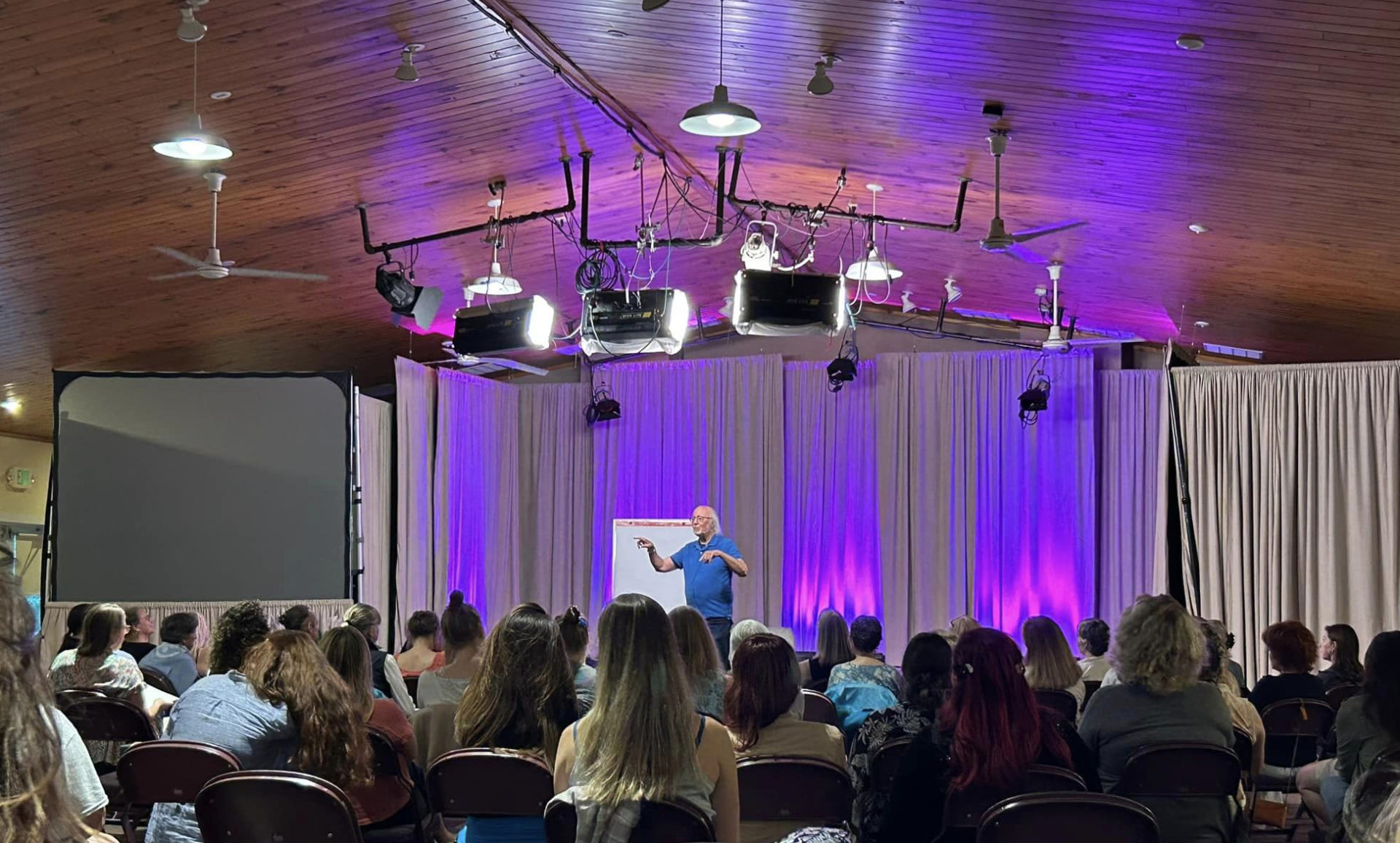
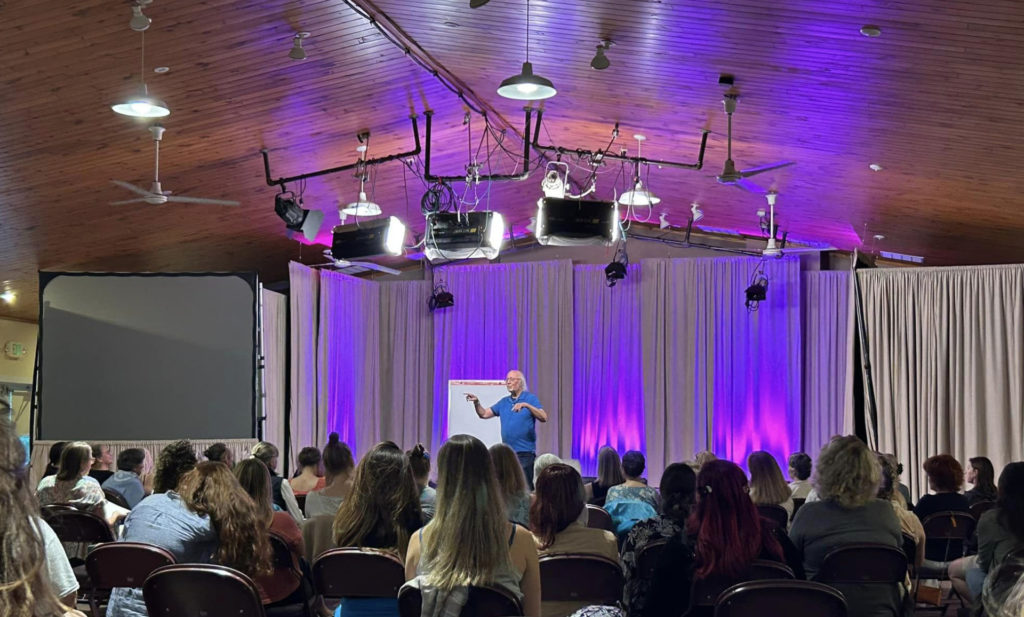




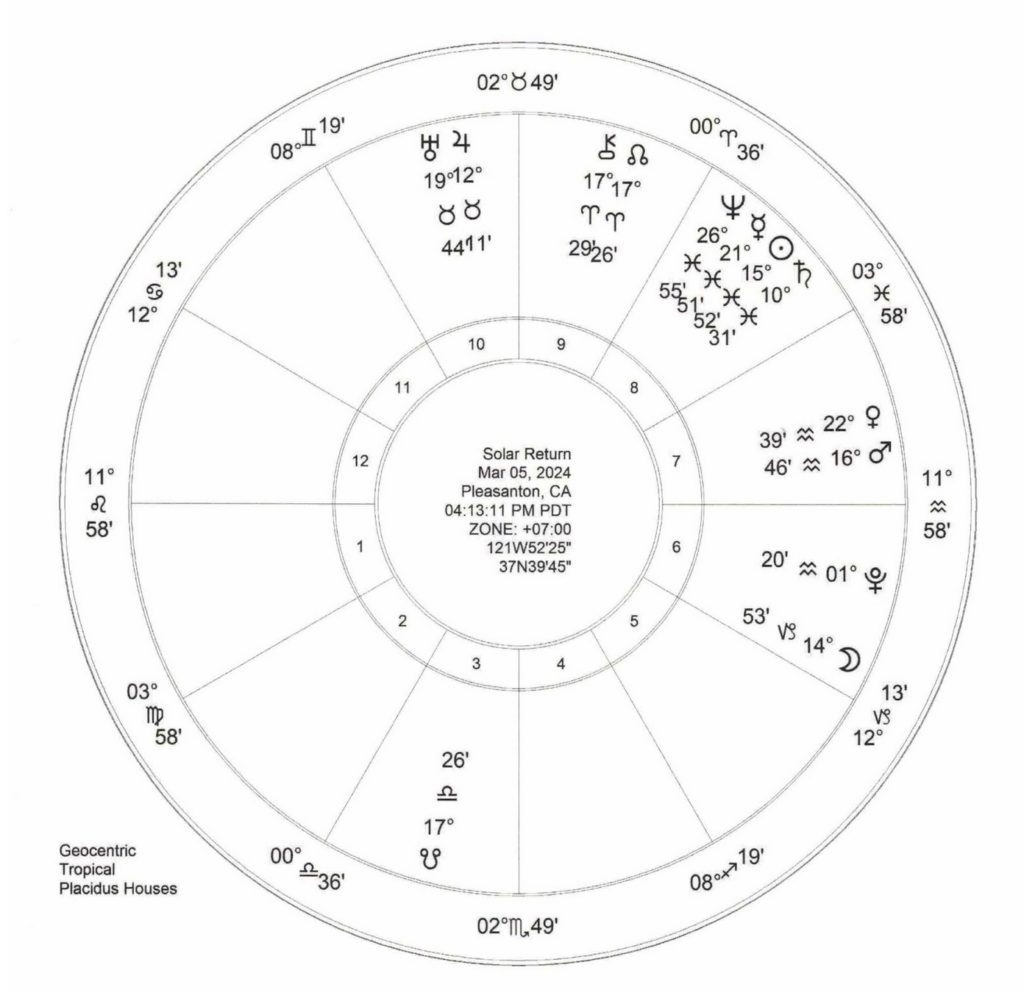
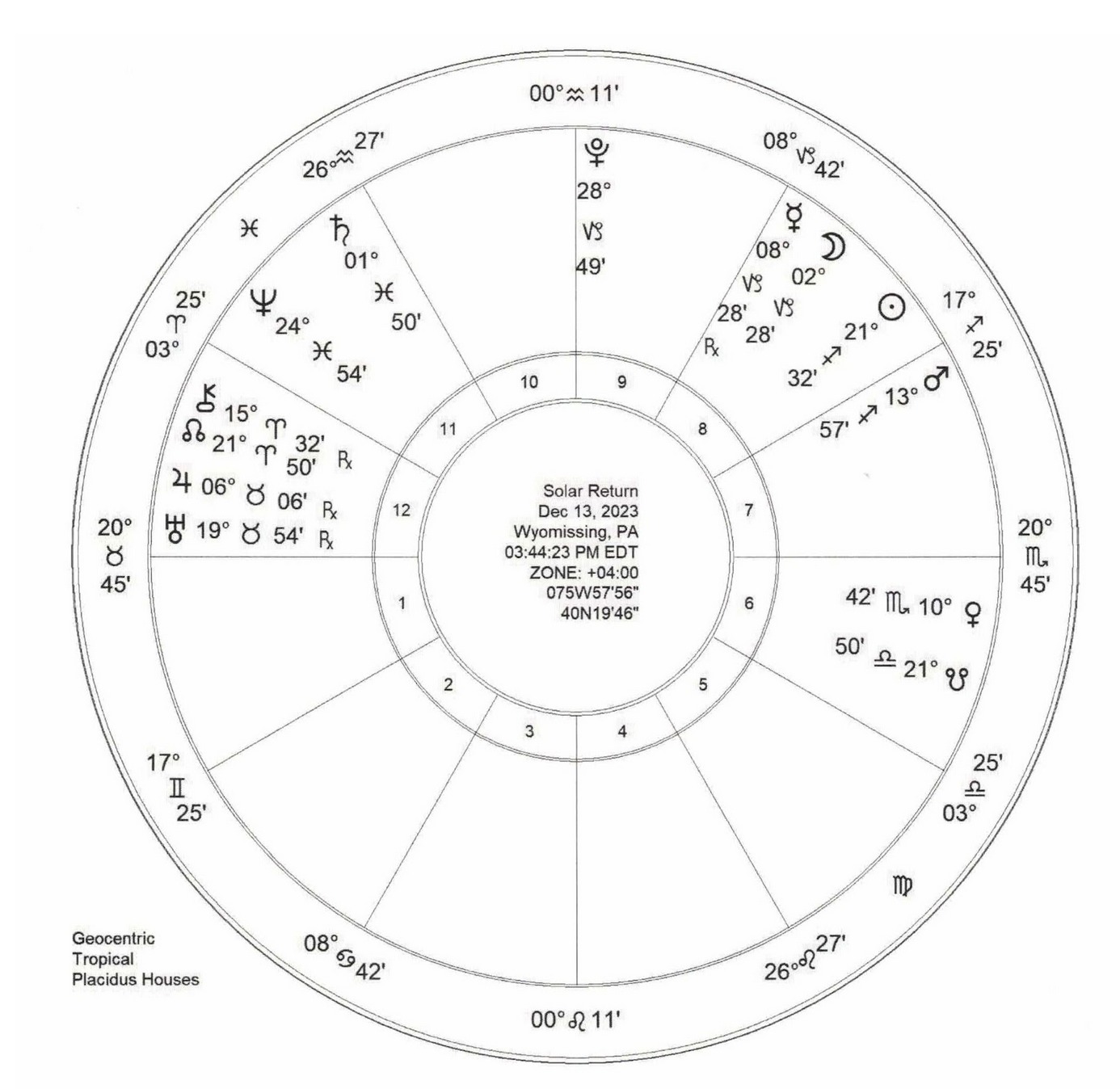
 One can delve more deeply into solar return charts than I have in this quick overview of the technique. Again, all of our basic evolutionary principles apply – we just have to make sure we are aiming them in the right direction, which is to focus our sense of our soul-aims for a given year.
One can delve more deeply into solar return charts than I have in this quick overview of the technique. Again, all of our basic evolutionary principles apply – we just have to make sure we are aiming them in the right direction, which is to focus our sense of our soul-aims for a given year. 